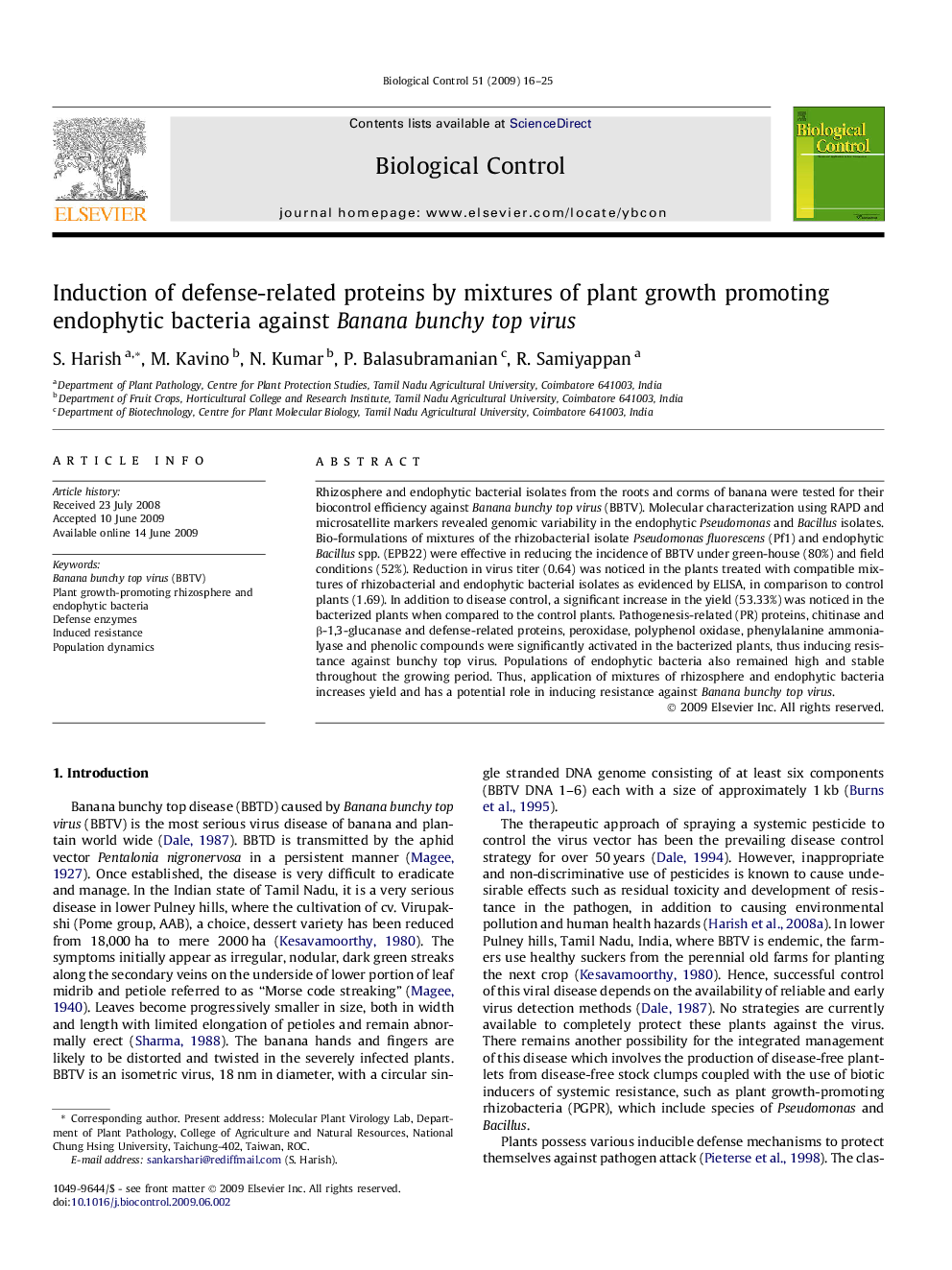| Article ID | Journal | Published Year | Pages | File Type |
|---|---|---|---|---|
| 4504506 | Biological Control | 2009 | 10 Pages |
Rhizosphere and endophytic bacterial isolates from the roots and corms of banana were tested for their biocontrol efficiency against Banana bunchy top virus (BBTV). Molecular characterization using RAPD and microsatellite markers revealed genomic variability in the endophytic Pseudomonas and Bacillus isolates. Bio-formulations of mixtures of the rhizobacterial isolate Pseudomonas fluorescens (Pf1) and endophytic Bacillus spp. (EPB22) were effective in reducing the incidence of BBTV under green-house (80%) and field conditions (52%). Reduction in virus titer (0.64) was noticed in the plants treated with compatible mixtures of rhizobacterial and endophytic bacterial isolates as evidenced by ELISA, in comparison to control plants (1.69). In addition to disease control, a significant increase in the yield (53.33%) was noticed in the bacterized plants when compared to the control plants. Pathogenesis-related (PR) proteins, chitinase and β-1,3-glucanase and defense-related proteins, peroxidase, polyphenol oxidase, phenylalanine ammonia-lyase and phenolic compounds were significantly activated in the bacterized plants, thus inducing resistance against bunchy top virus. Populations of endophytic bacteria also remained high and stable throughout the growing period. Thus, application of mixtures of rhizosphere and endophytic bacteria increases yield and has a potential role in inducing resistance against Banana bunchy top virus.
